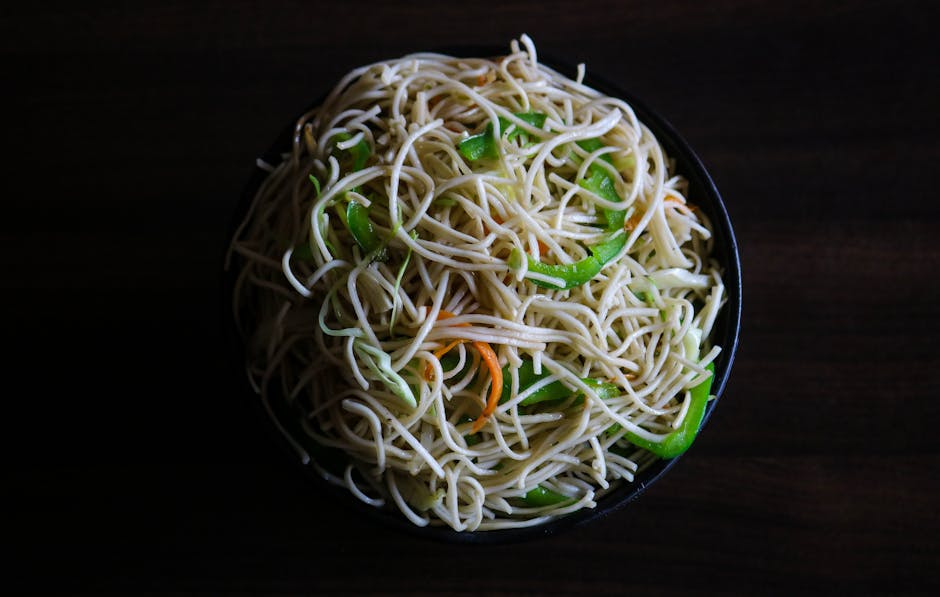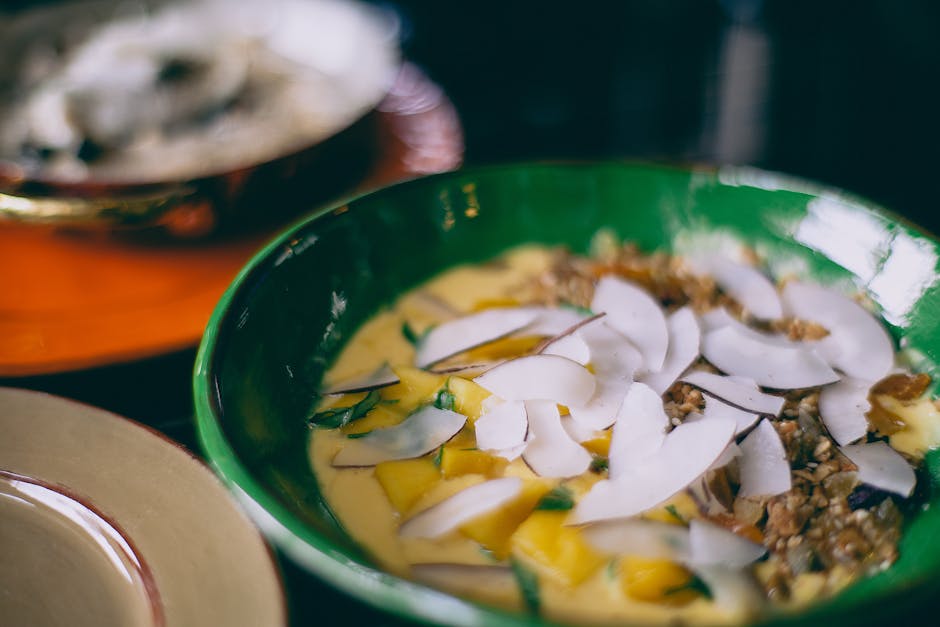Cabbage, a humble yet versatile vegetable, has played a significant role in cuisines across the globe for centuries. Its origins trace back to the Mediterranean region, with wild cabbage believed to have been cultivated as early as 4000 BC. From this ancestor sprang a variety of cabbage types, including the common green cabbage we most frequently use in stir-fries. Ancient Greeks and Romans incorporated cabbage into their diets, appreciating its nutritional value and ease of cultivation. Over time, cabbage spread across the world, becoming a staple in many cultures due to its hardiness and ability to thrive in diverse climates.
The stir-fry technique itself, while often associated with East Asian cuisine, boasts a rich and varied history. While pinpointing a single origin is difficult, the practice of quickly cooking vegetables and meats in a wok or similar pan evolved independently in several regions. The high heat and rapid cooking method preserves nutrients and creates a vibrant, flavorful dish. In China, stir-frying’s popularity surged, becoming an integral part of daily life and influencing culinary traditions across East and Southeast Asia. The simple yet effective method allowed for creative combinations of ingredients, resulting in a wide spectrum of flavors and textures.
Cabbage stir-fries, specifically, have become a ubiquitous dish worldwide. Their popularity stems from the accessibility of cabbage, its affordability, and the ease of preparation. The versatility of cabbage allows for countless variations, incorporating different meats, sauces, and seasonings to cater to individual preferences. A 2022 survey indicated that cabbage ranked among the top five most consumed vegetables globally, highlighting its widespread acceptance. This popularity also reflects its nutritional benefits; cabbage is a good source of Vitamin C, fiber, and antioxidants, contributing to a healthy and balanced diet. Furthermore, the ease and speed of preparation make it an ideal choice for busy individuals and families, cementing its place as a culinary staple.
This recipe for Easy Cabbage Stir-Fry aims to celebrate the simplicity and deliciousness of this classic dish. We’ll focus on a straightforward preparation, highlighting the natural flavors of the cabbage while offering suggestions for customization. It’s a dish that transcends cultural boundaries, a testament to the unifying power of good food, and a perfect example of how a humble vegetable can become a culinary star. Whether you’re a seasoned cook or a culinary novice, this recipe promises a satisfying and flavorful experience.
Ingredients and Measurements
This recipe for Easy Cabbage Stir-Fry yields approximately 4 servings. The quantities listed below can be easily adjusted to suit your needs; simply maintain the ratios for optimal flavor and texture.
Cabbage: We’ll be using 1 medium-sized green cabbage (approximately 1.5 lbs or 680g). Choose a cabbage that feels firm and heavy for its size, indicating freshness. Avoid cabbages with blemishes or soft spots. Before you begin, remove the outer, damaged leaves and core. Then, thinly slice the cabbage. The thinner the slices, the quicker and more evenly it will cook. Aim for slices about 1/8 inch thick. You can use a mandoline slicer for perfectly uniform slices, but a sharp knife will work just fine.
Protein (Optional): While this recipe is delicious on its own as a vegetarian option, adding protein is a great way to boost its nutritional value and make it a heartier meal. Choose your favorite! For this recipe, we suggest 1 cup (150g) of firm tofu, cubed, or 8oz (225g) of cooked chicken breast, sliced into bite-sized pieces. If using tofu, press it beforehand to remove excess water. This will help it crisp up nicely in the stir-fry. If using chicken, ensure it’s fully cooked before adding it to the stir-fry.
Aromatics: These are key to creating a flavorful stir-fry. We’ll start with 2 cloves of garlic, minced. Fresh garlic is best, but you can substitute with 1 teaspoon of garlic powder if necessary. Next, we’ll use 1 inch piece of ginger, peeled and finely grated or minced. Again, fresh ginger offers the best flavor. Finally, a small shallot (about 1/4 cup finely chopped) provides a mild oniony sweetness.
Sauce: The sauce is what brings this dish together. We’ll be using 2 tablespoons of soy sauce (or tamari for gluten-free), 1 tablespoon of rice vinegar, 1 tablespoon of sesame oil, and 1 teaspoon of honey or maple syrup (for a touch of sweetness). Adjust the amount of honey/maple syrup according to your preference. You can also add a pinch of red pepper flakes for a little heat. For a richer sauce, consider adding 1 tablespoon of oyster sauce (vegetarian oyster sauce is available).
Vegetables (Optional): Feel free to add other vegetables to enhance the flavor and nutrition. Consider adding 1/2 cup of sliced carrots, 1/2 cup of sliced bell peppers (any color), or 1/2 cup of snow peas. Add these vegetables along with the cabbage or slightly earlier, depending on their cooking time. Harder vegetables like carrots should go in first.
Oil: You will need 2 tablespoons of vegetable oil or your preferred high-heat cooking oil for stir-frying. Avoid using olive oil for high-heat cooking, as it has a lower smoke point.
Garnish (Optional): A sprinkle of sesame seeds and chopped green onions adds a beautiful visual appeal and extra flavor. Consider adding a squeeze of lime juice before serving for a tangy finish.
Equipment List
Preparing a delicious and easy cabbage stir-fry requires the right tools to ensure efficient and safe cooking. This section details the essential equipment, along with recommendations for optimal performance and substitutions where possible. Having the correct equipment will not only make the cooking process smoother but also contribute to the overall quality of your dish.
1. Wok or Large Skillet: A wok is traditionally used for stir-fries, offering a large surface area and sloped sides ideal for tossing ingredients. However, a large (12-inch or larger) non-stick skillet will work equally well, especially for those new to stir-frying. Choose a wok or skillet with a heavy base to ensure even heat distribution and prevent scorching. A thin-bottomed pan will lead to uneven cooking and potential burning of the cabbage.
2. Cutting Board: A sturdy cutting board, preferably made of wood or high-quality plastic, is essential for safely chopping vegetables. Avoid using glass cutting boards as they can dull knives quickly. A larger cutting board (at least 12×16 inches) will provide ample space for preparing all the ingredients. For hygiene, use separate cutting boards for raw meat and vegetables.
3. Chef’s Knife: A sharp chef’s knife (approximately 8 inches) is the most versatile tool for preparing the cabbage and other vegetables. A sharp knife ensures clean cuts, preventing bruising and promoting even cooking. Invest in a high-quality chef’s knife and keep it sharpened regularly for optimal performance. A dull knife will make chopping more difficult and potentially dangerous.
4. Measuring Cups and Spoons: Accurate measurements are crucial for achieving the desired flavor balance. A set of standard measuring cups (1 cup, ½ cup, ⅓ cup, ¼ cup) and measuring spoons (1 tablespoon, 1 teaspoon, ½ teaspoon, ¼ teaspoon) are essential. Use dry measuring cups for dry ingredients (like spices) and liquid measuring cups for liquids (like soy sauce).
5. Spatula or Tongs: A wide spatula or a pair of tongs are necessary for stirring and tossing the ingredients in the wok or skillet. A heat-resistant spatula is recommended to prevent melting or damage. Tongs are particularly useful for flipping larger pieces of cabbage or other vegetables.
6. Colander or Strainer: A colander or strainer is helpful for draining any excess water from the rinsed cabbage before stir-frying. This step helps to prevent steaming and ensures that the cabbage cooks properly. Choose a colander with relatively small holes to prevent smaller cabbage pieces from falling through.
7. Serving Bowl or Platter: Once the stir-fry is cooked, you’ll need a suitable serving bowl or platter to present your dish. Choose a bowl or platter that is large enough to comfortably hold the entire stir-fry without overcrowding.
While these are the essential pieces of equipment, other optional tools might enhance your experience. A vegetable peeler can be useful if you are using carrots or other root vegetables, and kitchen towels come in handy for cleaning up spills.
Preparation Phase: (Includes washing, chopping, etc.)
Before you begin the actual cooking of your Easy Cabbage Stir-Fry, meticulous preparation is key to achieving a delicious and visually appealing dish. This phase involves several crucial steps, each contributing to the final outcome. Let’s start with the star ingredient: the cabbage.
Washing the Cabbage: Begin by thoroughly washing your cabbage. A whole head of cabbage (approximately 1.5 lbs or 680g) is ideal for this recipe. Remove any outer leaves that are wilted or damaged. Cut the cabbage in half lengthwise, then remove the hard core. Don’t skip this step! Dirt and debris can easily hide within the leaves. Rinse each half under cold running water, paying close attention to the crevices between the leaves. You can use a vegetable brush to assist in removing any stubborn dirt.
Chopping the Cabbage: Now for the chopping. The size of your cabbage pieces will impact the cooking time and texture. For a stir-fry, we aim for a consistent, bite-sized chop. There are a few approaches: you can thinly slice the cabbage, then slice those slices into thin strips. Alternatively, you can roughly chop the cabbage into 1-inch (2.5cm) pieces. Consistency is important; aim for uniform pieces to ensure even cooking. Avoid making the pieces too small, as they may become mushy during cooking. A sharp knife is essential for clean cuts and to prevent bruising the cabbage.
Preparing the Other Vegetables: This recipe typically includes other vegetables like carrots and bell peppers. For this stir-fry, we’ll use one medium carrot (approximately 1 cup chopped) and one medium bell pepper (any color, about 1 cup chopped). Wash the carrot thoroughly, peel it if desired, and chop it into thin, matchstick-like pieces or small, roughly 1/2-inch dice. Wash the bell pepper, remove the stem, seeds, and membranes, and then chop it into similar sized pieces as the carrot. Consistency in vegetable size ensures they all cook evenly.
Garlic and Ginger Prep: Fresh garlic and ginger add incredible flavor to this stir-fry. Use about 2 cloves of garlic, minced finely. If you have a garlic press, this is the ideal tool for this task. For ginger, use about a 1-inch piece, peeled and finely minced or grated. Avoid over-mincing or grating, as this can release too much moisture and affect the flavor balance of the final dish. Mince the garlic and ginger separately, as this allows for better control over their distribution in the stir-fry.
Preparing the Sauce (Optional Prepping): While not strictly part of the chopping phase, pre-measuring your sauce ingredients can streamline the cooking process. Have your soy sauce (2 tablespoons), rice vinegar (1 tablespoon), sesame oil (1 teaspoon), and cornstarch slurry (1 tablespoon cornstarch mixed with 2 tablespoons of water) ready to go in separate small bowls. This avoids scrambling for ingredients amid the heat of cooking.
Once all your vegetables are washed, chopped and prepped, you are ready to start the stir-fry itself. Remember, careful preparation yields superior results!
Cooking Techniques: Stir-Frying for Perfect Cabbage
Stir-frying is a quick and efficient cooking method that relies on high heat and constant movement to create tender-crisp vegetables with a vibrant flavor. Mastering this technique is key to a delicious cabbage stir-fry. The goal is to cook the cabbage quickly enough to retain its crunch and bright green color, but thoroughly enough to ensure it’s safe to eat.
Choosing the Right Pan: A wok is traditionally used for stir-frying, but a large, wide-bottomed skillet or frying pan will work just as well. Ensure your pan is well-seasoned or non-stick to prevent the cabbage from sticking and burning.
Oil Selection: High-smoke-point oils are crucial for stir-frying. Peanut oil, canola oil, or vegetable oil are excellent choices. Use about 1-2 tablespoons of oil for a large skillet or wok. Too little oil will result in sticking, while too much will make the dish greasy.
Preparing the Ingredients: Proper preparation is essential for a successful stir-fry. Cut the cabbage into thin, even pieces, approximately 1/4 inch thick. This ensures even cooking and prevents some pieces from becoming overcooked while others remain raw. If using other vegetables, cut them into similarly sized pieces to ensure they cook at the same rate. Having all your ingredients prepped and ready to go before you start cooking will prevent delays and ensure the stir-fry cooks quickly and efficiently.
Stir-Frying Process: Heat the oil over high heat until it shimmers. Add the aromatics (e.g., garlic, ginger) first and stir-fry for about 15-20 seconds until fragrant. Then, add the cabbage and any other vegetables. Stir-fry constantly for 3-5 minutes, ensuring all pieces are in contact with the hot pan. The goal is to achieve a tender-crisp texture. Overcrowding the pan will lower the temperature and result in steaming rather than stir-frying. If necessary, work in batches.
Timing is Crucial: Don’t overcook the cabbage! Overcooked cabbage will be mushy and lose its vibrant color and flavor. Taste the cabbage frequently towards the end of the cooking time to check for doneness. The cabbage should be tender-crisp, with a slight bite remaining.
Seasoning and Finishing: Once the cabbage is cooked, add your sauce (soy sauce, oyster sauce, etc.) and stir to combine. Cook for another minute or two to allow the sauce to thicken slightly and coat the cabbage evenly. Taste and adjust seasoning as needed. Garnish with sesame seeds or chopped green onions, if desired.
Professional Recommendation: For a truly authentic stir-fry, use a wok and a wok hei (breath of the wok). This smoky flavor is achieved by building up a significant amount of heat in the wok and using a quick, forceful stirring motion. However, achieving wok hei requires practice and experience.
Important Note: Always ensure your food is cooked to a safe internal temperature to prevent foodborne illnesses. For cabbage, this means cooking it until it’s tender and heated throughout.
Serving Suggestions
Your Easy Cabbage Stir-Fry is incredibly versatile and lends itself to a multitude of serving styles, depending on your preference and the occasion. Whether you’re looking for a quick weeknight meal or a more elaborate dish, there’s a perfect serving suggestion to complement this delicious stir-fry.
As a main course: A single serving of this stir-fry, approximately 1.5-2 cups, provides a satisfying and healthy meal on its own. For a heartier experience, consider adding 4-6 ounces of cooked protein. Grilled chicken breast (cubed, approximately 1 cup), seasoned shrimp (1/2 cup, cooked), or firm tofu (1/2 cup, pan-fried or baked) are excellent choices. Remember to adjust cooking times to ensure your protein is cooked through before adding it to the stir-fry during the final minute of cooking.
Serving with rice: A classic pairing for stir-fries, steamed rice provides a perfect textural contrast to the crisp-tender cabbage. We recommend serving 1/2 to 3/4 cup of cooked white rice or brown rice per serving of stir-fry. For a more flavorful experience, consider using jasmine rice or even quinoa as an alternative. Avoid overcooking the rice, as this can lead to a mushy texture that detracts from the overall dish.
Adding noodles: For a more substantial meal, incorporate cooked noodles into your stir-fry. Approximately 1/2 cup of cooked egg noodles, spaghetti, or even udon noodles per serving will add a delightful chewy texture. Add the noodles during the last minute of cooking to prevent them from becoming soggy. Lightly toss them with the stir-fry to ensure even distribution of the sauce.
Garnishing your stir-fry: A sprinkle of fresh herbs can elevate your stir-fry to the next level. Consider using 1-2 tablespoons of chopped cilantro, green onions, or even a pinch of sesame seeds for an added burst of flavor and visual appeal. Freshly grated ginger (about 1/2 teaspoon) can also add a spicy kick. A squeeze of fresh lime juice (1/2 to 1 teaspoon) just before serving will brighten the flavors and add a touch of acidity.
Side dishes: This stir-fry pairs well with a variety of side dishes. A simple side salad with a light vinaigrette, a small bowl of miso soup, or even some steamed edamame beans can create a well-rounded and satisfying meal. Consider the overall balance of flavors and textures when choosing your side dishes. A crunchy salad will complement the soft cabbage, while a lighter soup will prevent the meal from becoming too heavy.
Leftovers: Store leftover stir-fry in an airtight container in the refrigerator for up to 3 days. Reheat gently in a pan or microwave, avoiding overcooking, which can lead to a mushy texture. Leftovers can be enjoyed cold as well, making it a great option for lunch or a quick snack.
Tips and Tricks for Success
Achieving a perfectly delicious and vibrant Easy Cabbage Stir-Fry hinges on a few key techniques. Follow these tips and tricks to elevate your culinary skills and guarantee a winning dish every time.
Prep is Key: Proper preparation is paramount for a successful stir-fry. Begin by finely slicing your cabbage. Aim for thin, even strips approximately 1/8 inch thick. This ensures even cooking and prevents some pieces from becoming mushy while others remain crunchy. Don’t skip this step! Unevenly sliced cabbage leads to uneven cooking.
Oil Selection Matters: Choose a high-smoke-point oil like canola, peanut, or vegetable oil. These oils can withstand the high heat of stir-frying without breaking down and imparting undesirable flavors. Use approximately 2 tablespoons of oil for a typical stir-fry serving 2-4 people. Avoid using olive oil, as its lower smoke point can lead to burning and a bitter taste.
Don’t Overcrowd the Pan: Overcrowding the wok or pan lowers the temperature, leading to steaming instead of stir-frying. Work in batches if necessary, ensuring that the cabbage has ample space to brown and crisp. This will result in a more appealing texture and flavor. Ideally, you should have a single layer of cabbage in the pan.
Master the Stir-Fry Technique: Stir-frying is all about quick, constant motion. Use a spatula or wok hei to constantly toss the cabbage, ensuring even cooking and preventing sticking. This continuous movement helps to create a light, crisp texture. Don’t just leave the cabbage in the pan; actively stir it throughout the cooking process.
Seasoning is Crucial: Don’t be shy with the seasoning! Start with a base of salt and pepper, then experiment with other flavors. A tablespoon of soy sauce or tamari adds umami, while a teaspoon of sesame oil provides a nutty aroma. Consider adding a pinch of red pepper flakes for a touch of heat. Taste as you go and adjust the seasoning to your preference. Remember that the flavors will meld as the dish cools.
Timing is Everything: Overcooked cabbage becomes mushy and loses its vibrant green color. Aim for a cooking time of approximately 3-5 minutes, or until the cabbage is tender-crisp. The cabbage should still retain a slight crunch. If you’re adding other vegetables, adjust the cooking time accordingly, adding firmer vegetables earlier in the process.
Garnish and Serve: A simple garnish can elevate the presentation of your stir-fry. Sprinkle some toasted sesame seeds or chopped green onions for added visual appeal and flavor. Serve immediately to enjoy the dish at its best. Don’t let the stir-fry sit for too long, as it will lose its crispness.
Embrace Experimentation: Once you’ve mastered the basic technique, feel free to experiment with different flavor combinations. Add other vegetables like carrots, bell peppers, or mushrooms. Try different sauces, such as oyster sauce or hoisin sauce. The possibilities are endless! Let your creativity guide you toward your perfect Easy Cabbage Stir-Fry.
Recommendations for Easy Cabbage Stir-Fry
This Easy Cabbage Stir-Fry is a versatile and healthy dish perfect for a quick weeknight meal or a light lunch. To maximize its flavor and nutritional value, consider these recommendations:
Serving Suggestions: This stir-fry is delicious on its own, but it can be elevated with a few simple additions. Serve it over fluffy white rice or quinoa for a more substantial meal. Brown rice adds a nutty flavor and extra fiber. For a low-carb option, enjoy it with cauliflower rice or zucchini noodles. Garnish with toasted sesame seeds, chopped green onions, or a sprinkle of red pepper flakes for added visual appeal and a touch of extra flavor. A squeeze of fresh lime juice just before serving brightens the flavors beautifully.
Storage Conditions: Leftovers can be stored in an airtight container in the refrigerator for up to 3-4 days. Ensure the stir-fry is completely cooled before refrigerating to prevent bacterial growth. When reheating, use a microwave or stovetop over medium heat, stirring frequently to prevent sticking and ensure even heating. Avoid reheating the stir-fry more than once.
Complementary Dishes: This stir-fry pairs well with a variety of dishes. For a balanced meal, consider serving it alongside grilled chicken or tofu for added protein. Shrimp or pork would also be excellent additions. A side of steamed edamame or a simple green salad adds extra nutrients and contrasting textures. For a more substantial meal, serve it with dumplings or spring rolls. The slightly sweet and savory flavors of the stir-fry also complement Asian-inspired soups and noodle dishes.
Nutritional Information (Approximate per serving, based on a 4-serving recipe): The nutritional content will vary depending on the specific ingredients and quantities used. This is an estimate based on a standard recipe using approximately 1 medium head of cabbage, 1 tablespoon of oil, and other standard additions. This information should be considered an approximation and not a precise calculation. For accurate nutritional information, use a nutrition calculator with your specific ingredients and quantities.
Approximate Calorie Count: 150-200 calories per serving
Approximate Macronutrient Breakdown:
- Carbohydrates: 10-15g
- Protein: 5-7g
- Fat: 5-10g
Vitamins and Minerals: This stir-fry is a good source of Vitamin C, Vitamin K, and fiber, primarily from the cabbage. The specific vitamin and mineral content will depend on the other vegetables included in your recipe.
Tips for Enhancing Flavor: To enhance the flavor profile, experiment with different sauces. A splash of soy sauce, rice vinegar, or fish sauce can add depth and umami. A touch of honey or maple syrup can balance the savory notes with a hint of sweetness. Adding fresh ginger and garlic will significantly boost the overall flavor. Don’t be afraid to experiment with different spices and herbs like chili flakes, sesame oil, or coriander.
Adjusting Spiciness: The spiciness level can be easily adjusted to your preference. Start with a small amount of chili flakes or a mild chili sauce and add more to taste. For a milder dish, omit the chili altogether. Remember that the spiciness can intensify as the dish cools.
Making it a Complete Meal: To turn this stir-fry into a complete and balanced meal, consider adding a source of protein such as lean chicken breast, tofu, or shrimp. Adding nuts or seeds can also boost the protein and healthy fat content.





